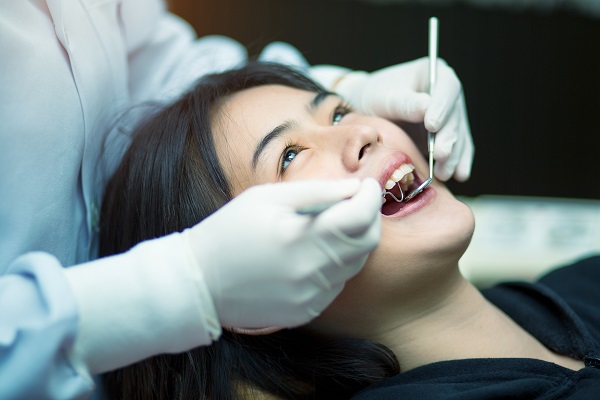 Veneers are artificial tooth coverings made of porcelain or resin that can improve a patient’s smile. Only fixed to the surface of the patient’s natural teeth, these dental appliances can be used to repair a majority of aesthetic issues, such as chips, stains, or cracks. Getting any dental treatment that mends problems with a smile can greatly boost the confidence of a patient and improve everyday living. If you are interested in getting this simple treatment, here is how to get started.
Veneers are artificial tooth coverings made of porcelain or resin that can improve a patient’s smile. Only fixed to the surface of the patient’s natural teeth, these dental appliances can be used to repair a majority of aesthetic issues, such as chips, stains, or cracks. Getting any dental treatment that mends problems with a smile can greatly boost the confidence of a patient and improve everyday living. If you are interested in getting this simple treatment, here is how to get started.
What to discuss with a dentist
When a patient wants to fix a smile, many questions come to mind. Before any dental treatment is chosen, it is important to understand each option and if a patient is a good fit for the procedure. For veneers, this means talking to a dentist about the advantages of this material over others, if a patient’s teeth qualify for treatment, how the procedure works, and proper aftercare. Fortunately, most dentists are open to discuss these things and talk patients through each step of the process.
Is the patient a good candidate?
Many dental treatments can improve a smile by removing teeth stains and filling in damage. Veneers may be right for a patient who has severe discoloration that cannot be helped by other procedures. Patients who have teeth with general wear or that are separated by unsightly gaps can also benefit from this treatment over other options, as it covers the surface of each tooth, making a smile even, filled in, and properly colored. Patients can ask a dentist if this procedure is advantageous for their individual needs.
How does the procedure work?
First, a dentist will take measurements of the patient’s teeth for the creation of the veneers. Patients can discuss whether porcelain or resin is a good choice depending on personal needs. For example, resin material can often be made while the patient waits in a same-day procedure, while porcelain is usually made in a lab away from the dental office but is considered more durable and lasts longer. A dentist can advise patients on which to choose.
Once the materials are made, the dentist scrapes away a small portion of each tooth that is to be treated. This makes necessary room for the attachment of the porcelain or resin. Finally, each veneer is bonded to the tooth, and the dentist may complete extra sculpting so that the teeth look uniform and neat.
What are proper aftercare techniques?
Getting veneers can be a big decision, so patients will want to keep them as pristine as possible for lasting results. Keeping up normal dental hygiene, including brushing twice a day and flossing at least once, is a great way to maintain the new appliances. Avoiding drinks and foods that stain, such as red wines and tomato-based sauces, can prevent discoloration.
Conclusion
Starting a conversation with a dentist about any treatment can be intimidating, but these professionals are there for every patient’s dental needs. Even if the desire for treatment is purely cosmetic, a dentist will still be more than willing to discuss it.
Request an appointment or call Gray Family Dental at 954-840-1940 for an appointment in our Coral Springs office.
Recent Posts
Veneers can improve a patient’s smile in many ways by covering up imperfections in teeth with natural-colored shells. Staining on front teeth is one of the most popular reasons patients choose this type of restoration. People who have lived with discolored teeth can feel uncomfortable smiling in public, and other treatment options may not be…
Dental veneers are used to treat a variety of issues, including damaged, misshapen, or misaligned teeth. While they can let patients enjoy an attractive, natural-looking smile, these tooth coverings may show signs of aging and staining without adequate care. Taking steps to prevent unnecessary stains helps keep veneers looking bright and beautiful.The most important step…
Dental veneers can transform a smile. The American Dental Association defines these as "thin, custom-made shells crafted of tooth-colored materials designed to cover the front side of teeth." These restorations are typically made of porcelain or resin and can last for many years. There are some situations in which veneers need to be replaced; most…


